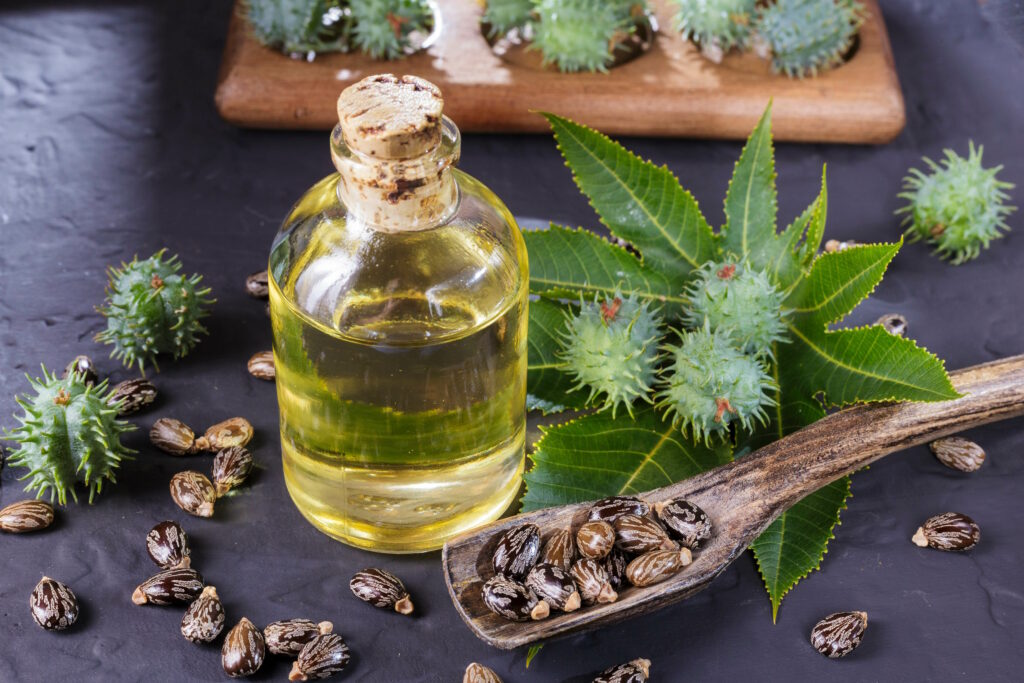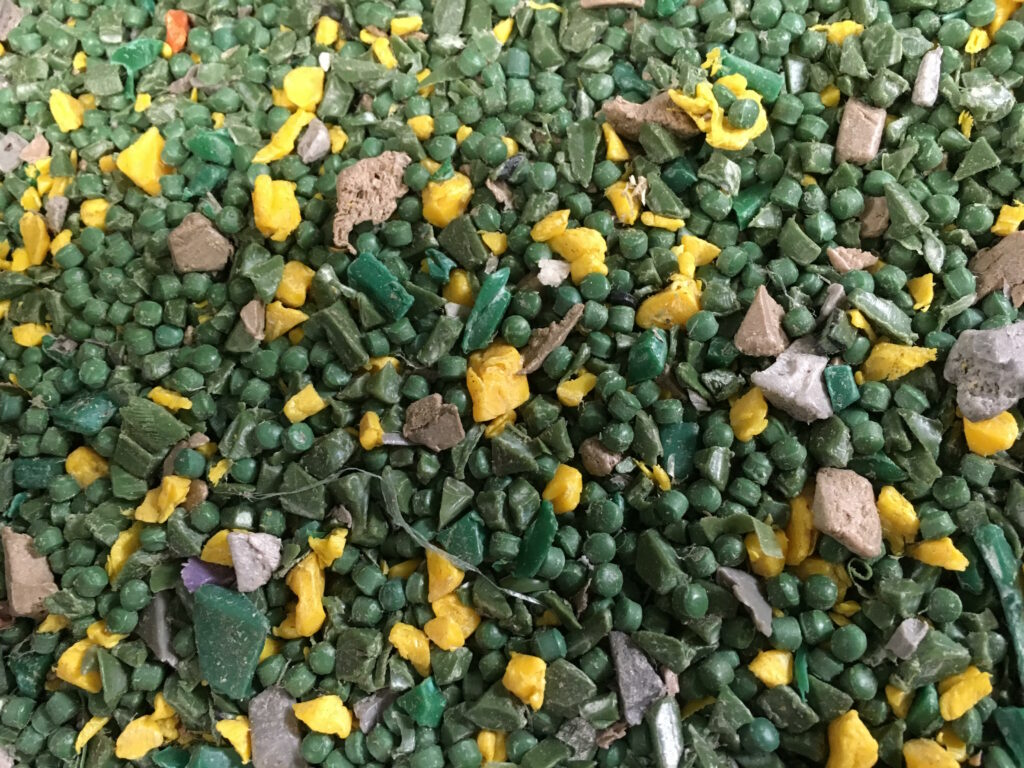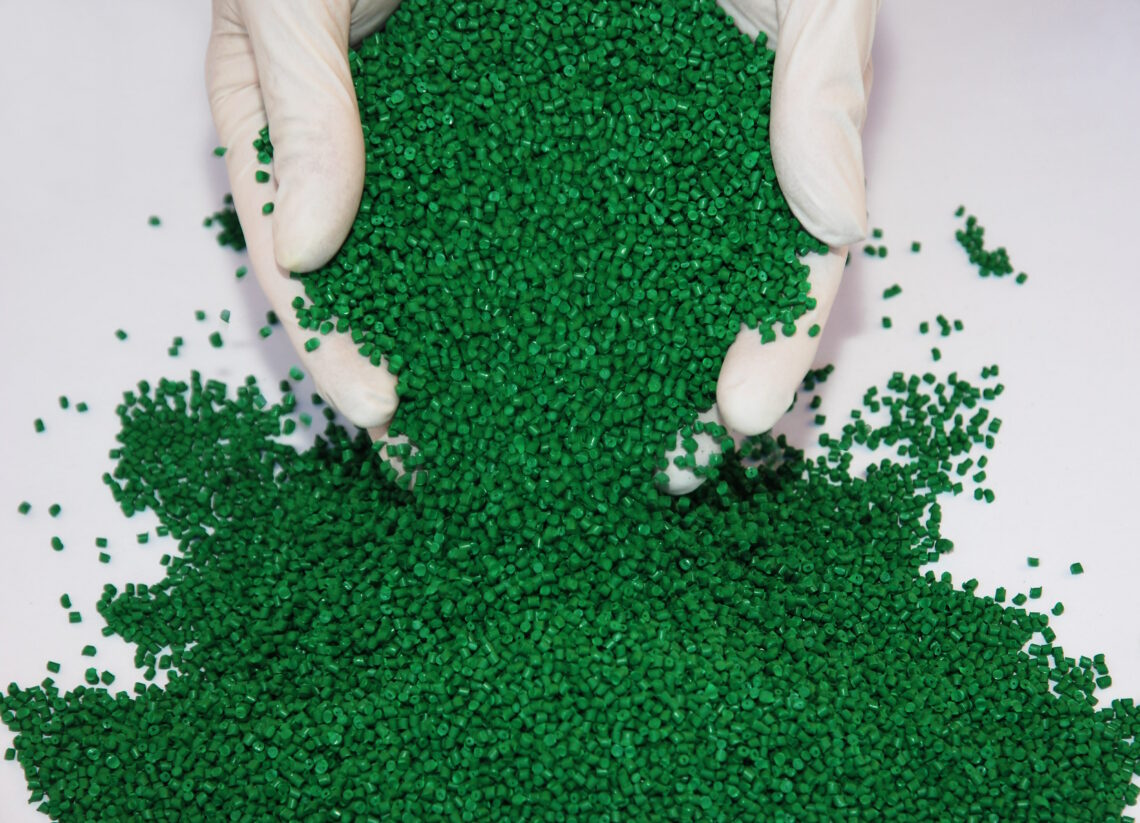This post is also available in: Deutsch
NORMA Group analyzes CO2-neutral materials for manufacturing plastic quick connectors and tubes
Only 100 years ago, synthetic plastic material started to become widespread in our world. The adaptability, robustness and easy processability of plastics are the main reasons for this rapid success story. No matter if we look into cars, buildings, machines, household appliances or computers: Plastic is everywhere.
There are downsides to this omnipresence of plastics. First, the starting material of plastic is usually petroleum, natural gas or other fossil matter. These fossil resources are becoming scarce. Second, plastics production releases large amounts of greenhouse gases and thus contributes to global warming. Third, the pros of the material are also a drawback: The durability of plastic also means it takes a very long time to degrade. Plastic pollution can harm the ecosystems both on land and in the oceans.
Plastic resin comes in different colors and materials. If it is heated, it can be molded into different forms.
Quick connector eM Compact for electric cars, made from polyamide 66 via injection molding at NORMA Group.
NORMA Group manufactures quick connectors, tube lines, valve boxes and other products out of plastic. We buy plastic resins from suppliers and processes it in its plants into various forms. By injection molding or by extrusion, the plastic resin is brought into its forms such as tubes or joining components. Our customers benefit from the lightweight material and the flexible design opportunities that plastic offers. The crucial question: How can we continue to provide high-quality joining solutions but reduce our carbon footprint along the complete value-chain, that is including the materials we use?
Sustainable material: bio-based or recycled
Plastic consists mainly of carbon. If synthesized out of a non-fossil carbon material, the negative effects of plastic production can be minimized. NORMA Group analyzes if it’s possible to use sustainable, so-called “green” material for its plastic products. There are two main options: bio-based material and recycled material.
Bioplastics: made from plants
Bio-based plastic consists of a natural, renewable source. We are currently working with improved polyamide 11 (PA 11), a bioplastic made from castor oil. This is not a new material for NORMA Group: Already since 2012, we have PA11 in serial use for fuel applications. We are now checking if we can use the material for joining elements in electric cars.
Examples for sustainable bioplastics
PA 11: Polyamide 11 is a high-performance plastic made from a renewable raw material: castor oil. The oil is pressed from the seeds of the ricinus plant which grows widely in tropical regions. PA11 is a light, semi-crystalline and linear thermoplastic material. Since it is chemically and mechanically heat-resistant and durable, it could be an alternative for various plastic materials, such as polyamide 12 (PA12) and polyamide 6 (PA 6), both well-established plastic materials made from fossil raw material.
PA 610: Polyamide 610 is a special plastic consisting of two monomers – PA 6 and PA 10. In contrast to these two (which come from fossil sources), PA 610 can be polymerized from a mixture of a fossil source and castor oil. The content of bio-based raw material has to be significant in order for the material to be considered bio-based plastic.

The seeds of the castor oil tree (ricinus communis) can be pressed to obtain its oil – a potential source for bioplastic.
Testing takes at least a year
At the moment, NORMA Group focuses on testing bio-based materials: Do these materials perform as well as required? Before considering any new plastic materials for customer projects, we need to find out if the quick connectors and tubes made from the alternative material perform as good as those made of fossil-based resins. Also, we need to research the resins’ behavior in our manufacturing processes.
We currently test seven sustainable materials – each of them non-stop for nearly a year
It’s a big mix of tests: How do they behave in processing, are the used processes (e.g. extrusion, injection molding, thermoforming, assembly) stable and repeatable, how do they age, do they withstand heat and contact with aggressive fluids and so on. The tests have been running now for a few months at our test labs in Germany, France and Poland and will continue several more months. We currently test seven sustainable materials – each of them for at least 8,000 hours.
What we’ve found so far: PA 610 is a stable material that offers good resistance to several media and is easy to process. Thus, it could be used very well in serial mass production. Bio-based PA 11 offers good dimensional stability and excellent aging resistance – rather promising results.
NORMA Group has dedicated material experts among their development engineers. They regularly scan the market and are in touch with the resin manufacturers. In case technically and commercially interesting new materials are identified, we’ll check if they fit our needs.
Recycled plastic: Pre-used and ready for a new life
Another approach for sustainable material is to use what is already commercially available on the market. NORMA Group purchases recycled resins as well as resins with a certain amount of recycled plastic. More than 50 percent of the plastic resin purchased for our water management products is recycled. For some products, the proportion is higher: up to 90 percent.

Recycled and regranulated plastic for manufacturing water management products
In recent years, the proportion of recycled plastics has grown steadily. By buying this from technical suppliers, we can be sure that the material is consistent in its quality. The recycled plastic usually comes from waste of plastic production from various industries. Furthermore, we re-use our own scrap from our production processes. However, this isn’t considered recycling as it is actually a sensible and efficient way to manage raw material.
The circle goes on …
Sustainable use of raw material doesn’t stop with our product. In our industry, more and more customers and partners require that our products are recyclable after their lifetime. With our suppliers and customers, we are working on ways to further contribute to the circle of recycling.





One response to “Can connectors be made out of sustainable “green” plastic?”
Diana Johnson
This article raises a crucial question about the potential of sustainable “green” plastic for connectors. It’s inspiring to see the exploration of eco-friendly alternatives in various industries. Sustainable practices in manufacturing can significantly contribute to reducing our environmental footprint. I’m curious to learn more about the types of “green” plastics being considered and their durability in comparison to traditional materials. Are there any ongoing initiatives or success stories you can share regarding the implementation of sustainable connectors in real-world applications? Thank you for engaging with our article! We appreciate your enthusiasm for sustainable practices in manufacturing. Indeed, the quest for eco-friendly alternatives is gaining momentum across industries. In response to your question, ongoing research is exploring a range of “green” plastics, including those derived from plant-based sources and recycled materials. The durability of these materials is a key focus, and advancements are being made to ensure they meet or exceed the performance of traditional counterparts. Stay tuned for future updates as we delve deeper into specific initiatives and success stories within the realm of sustainable connectors. We value your interest in this important journey toward a more sustainable future!